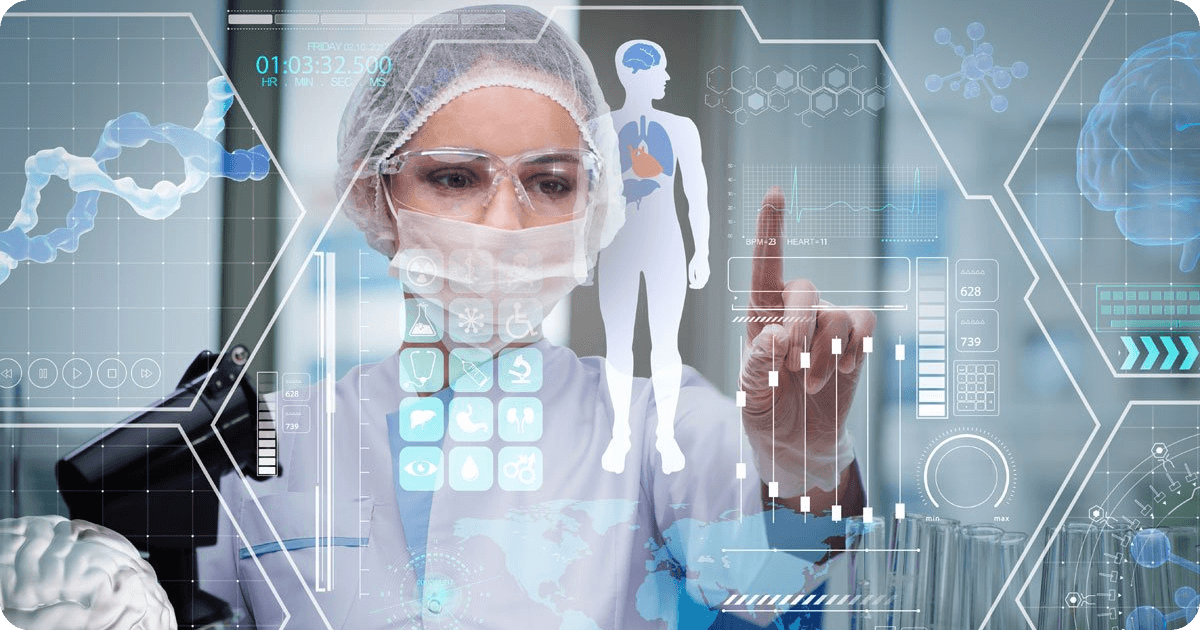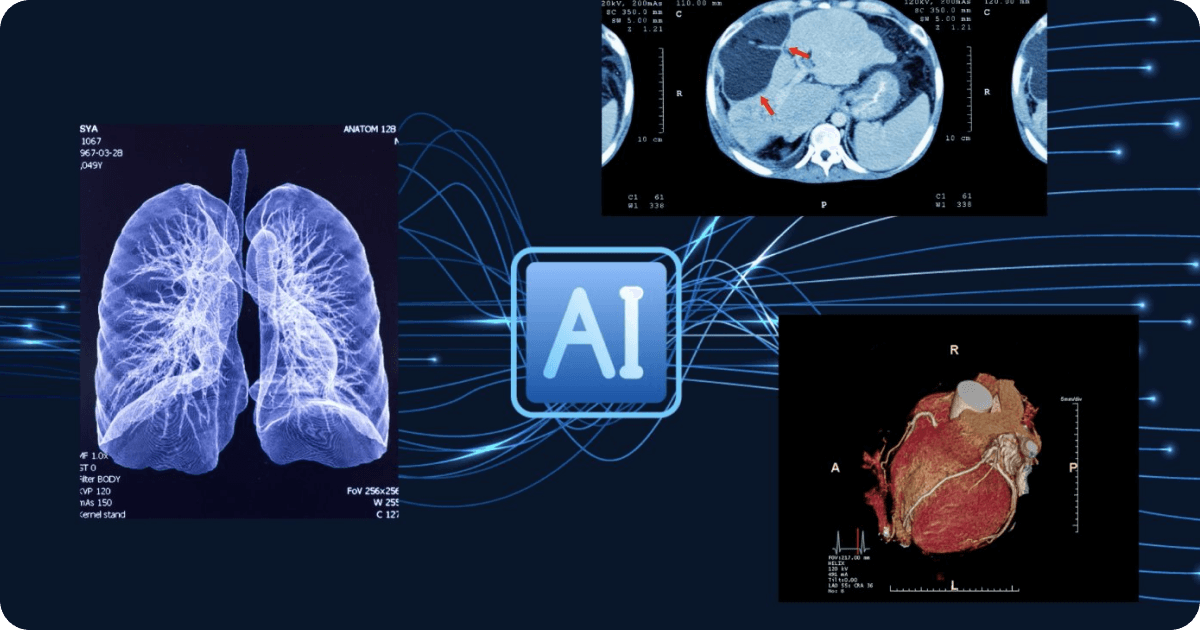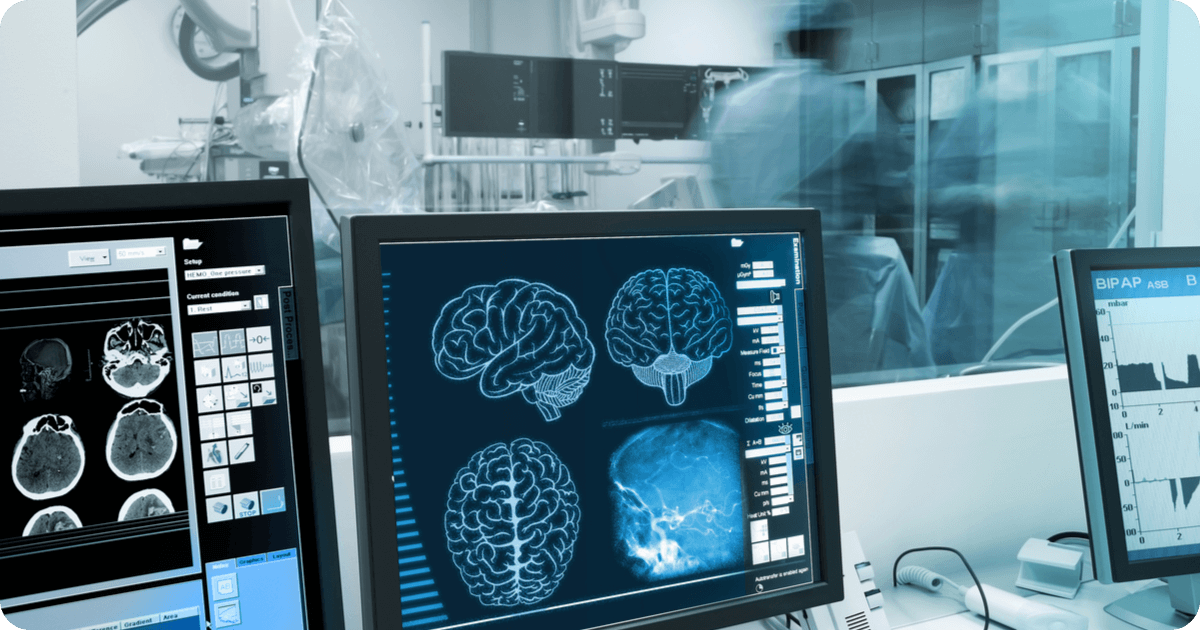Discover how AI in medical imaging is transforming the way healthcare providers diagnose illnesses and provide treatments to patients. Plus, explore how this is improving patient experience.
It’s a pretty known fact that technology is transforming medical care by improving everything ranging from diagnosis to patient experience. And medical imaging isn’t an exception. It doesn’t matter if it’s for a cardiac event, a fracture, thoracic complications, or a neurological condition. Doctors can rely on artificial intelligence to pave the way for faster diagnosis and treatment. In this article, we’ll explore all the keys you need to know about AI in medical imaging.
Here you’ll find how AI for medical imaging can drive benefits such as boosting precision medicine, enhancing medical screening, improving the assessment of patient risk factors, and smoothing the work for physicians. Plus, we’ll see how it works and some great examples of how AI is being used in medical imaging.
How AI is used in medical imaging
As with other medical interventions and exams, medical imaging is evolving. In the beginning, it was only a way to diagnose medical conditions but nowadays it has a key role in treatment too, especially in illnesses such as cancer. That’s why implementing AI in medical imaging can have a great impact on the entire healthcare process. For example, when physicians use AI in medical imaging, they are able to identify conditions faster and even perform interventions earlier.
But how is this possible? It is possible thanks to massive AI and machine learning massive computing abilities. These abilities mine body scans and look for differences that humans can’t perceive. Note that in the first decades of radiology, it was all about refining the resolution of the pictures in order to identify diseases, but now technology is lending a hand in this process with data. So long story short: the entire AI in medical imaging relies on analyzing each data point to distinguish the disease from health and signal from noise.
AI for medical imaging is then an entire transformation and improvement for human health. Following the first example about cancer, doctors can use this technology to boost tumor and spread of cancer cells monitoring, so they know in early stages if the therapies they’re using are actually working. This is just a sneak peek of the new role of medical imaging that was improved by AI and comes with great benefits like fueling doctors with key patient health insights, enhancing decision-making, and meeting better treatments.
How can Artificial Intelligence be used in medical imaging
We’ve quickly seen just one example of the role that AI is playing in medical imaging. Let’s dive deep into 5 uses of AI in medical imaging.
1. Detecting fractures
AI can be used to identify hard-to-see fractures, soft tissue injuries, and dislocations. Remember that fractures and other musculoskeletal injuries can help long-term, chronic pain take place if they’re not treated in the right way and at the right time. And we have to take into account the fact that sometimes when doctors analyze trauma-related imaging, they might strengthen their focus just to identify immediate clinical concerns, and fractures or other important injuries can be overlooked. This is how AI gets to play an important role in focusing on the entire imaging.
2. Identifying thoracic complications and conditions
Part of the work of AI in medical imaging is also identifying and flagging thoracic complications and conditions. For example, pneumonia and pneumothorax are just two of the conditions that need fast treatment, and both of them can be identified by AI algorithms. How is this possible? An AI algorithm has the power to evaluate x-rays among other images and note opacities that can indicate pneumonia. After spotting these opacities, AI technologies can alert healthcare providers and deliver them potential diagnoses to speed up treatment.
3. Spotting cardiovascular abnormalities
In order to identify the risk of suffering from a cardiovascular disease that a patient can have or even just to spot issues that might need to be solved with surgery or another kind of treatment. Those are just two reasons that can prompt a doctor to measure the different structures of a heart. AI can also lend a hand in the process. When automating the detection of abnormalities in imaging tests that are even part of routine exams, doctors can enjoy faster decision-making and leave less room for diagnostic errors.
4. Paving the way for neurological disease diagnosis
If doctors use AI in medical imaging related to degenerative neurological diseases like amyotrophic lateral sclerosis (ALS), they will be able to reach a more accurate diagnosis. In terms of neurological diseases, there might be no cure for some of them, just like it happens with ALS, but there’s indeed a great difference when doctors are truly capable of understanding the entire picture, which includes the outcomes that patients are likely to have. For instance, when understanding the full picture, they have the power to create a long-term care plan that better suits a patient’s needs.
5. Screening for common cancers
We’ve seen a little bit of what happens when doctors use AI in medical imaging when they’re studying cancer. But let’s explore it a little more. When doctors ask for medical imaging, whether it’s used in routine, preventive screening or not, they can rely on AI to boost the accuracy and even harness risk scores for areas of concern. Note that this can reduce false positives—and therefore save patients from invasive tests—and also help providers make more informed decisions to achieve better testing or treatment.
What are the benefits of using AI for medical imaging
From all the examples we’ve explored of AI in medical imaging, we can identify at least these benefits:
- AI can improve precision in medicine.
- AI can boost risk indication and assessment.
- AI can be used to spot unseen abnormalities and help enhance patient care.
- AI can bring an important input to providers to speed up time-to-treatment.
- AI can help healthcare providers act faster in case of risky diseases.
Technology is doing a lot for healthcare, a lot to pave the way for providers to focus on delivering the greatest care experience to patients and improving their health. But AI in medical imaging is just one of many appliances that technology has. Explore more in our blog.














